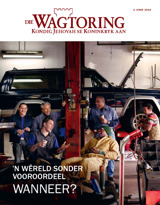

It transpired that 68% of them had no command of the language while some reported that they were still learning it. The third step was to determine whether the respondents were proficient in Northern Sotho.

In most instances they had no option but to use English to interact with potential employers because it was the only language in common use in commercial and industrial settings. Most respondents reported that a lack of proficiency in English prevented them from performing well in their jobs in commerce and industry and some reported that it had been a significant impediment to their efforts to secure employment. The second step was to determine the effects that could be expected on the current hegemonic use of English or Afrikaans as languages of commerce and industry. Only 3% of the respondents to the questionnaire survey indicated that they used Northern Sotho for transactional purposes in commercial and industrial settings, while 46,8% reported using a smattering of Northern Sotho in a variety of situations. English and Afrikaans were naturally found to be dominant in commerce and industry while Northern Sotho was used among friends and colleagues in informal situations. The first step towards determining the feasibility of developing and using Northern Sotho as a language of commerce and industry was to determine the current situation in this regard. However, it should be noted that the questionnaire was not designed to reveal explicit allegiances hence responses in this regard are somewhat open to interpretation. A distinct majority (64,7%) of respondents who filled in questionnaires was not favourably disposed but a significant minority (35,3%) was positive. A negligible percentage of respondents expressed negative sentiments in this regard (cf. The question here is: How does one determine feasibility? Before this issue could be addressed another important and sensitive matter had to be considered: to determine whether native speakers of Northern Sotho and the other South African languages are favourably disposed towards the prospective development and use of Northern Sotho as a language of commerce and industry. Feasibility of developing Northern Sotho lexicography and terminology for the purposes of commerce and industry.Dispositions of mother-tongue speakers of Northern Sotho and other languages towards the prospective development and use of Northern Sotho as a language of commerce and industry.Existence of language policies for workers in commerce and industry.Socio-economic background of respondents.The exclusive hegemonic use of English or Afrikaans as a communication barrier to non-native speakers of these languages in commerce and industry.The identified themes are consolidated as follows: Data from the second phase were captured and encoded in transcripts that were later decoded and reduced to themes, categories and sub-categories. The categories were reduced to thematic constructs. The data from the first phase were captured and decoded in categories set out in frequency tables. A wealth of data was produced by these means. The investigation is characterised by a two-pronged approach to data collection: a questionnaire survey and focus group interviews.

Grammatical changes under English influence are attested in areas where Afrikaans experiences ongoing change away from its Dutch input forms, but also show creativity on the part of Afrikaans speakers, and not simple adoption of English patterns, for instance in complementiser constructions, newly grammaticalised demonstratives, and pronominal uses of een ‘one’.The main objectives of this study are to investigate the feasibility of using Northern Sotho as a language of commerce and industry and to determine the extent to which the environment favours the use of Northern Sotho as a language of marketing, advertising, business and acquiring entrepreneurial skills. Vocabulary borrowing, including loan translation, occur in areas where speakers of Afrikaans come into contact with a changing world through English, in domains such as government, industry, sport and entertainment, and modern technology. Code-switching and code-mixing are an area of extensive influence and serve as an overt identity marker for many Afrikaans speakers, most particularly its Coloured native speakers in the Western Cape. Such contact and its linguistic effects have often been interpreted as a threat to the vitality or linguistic integrity of the Afrikaans language. Afrikaans has been in contact for the past two centuries.


 0 kommentar(er)
0 kommentar(er)
